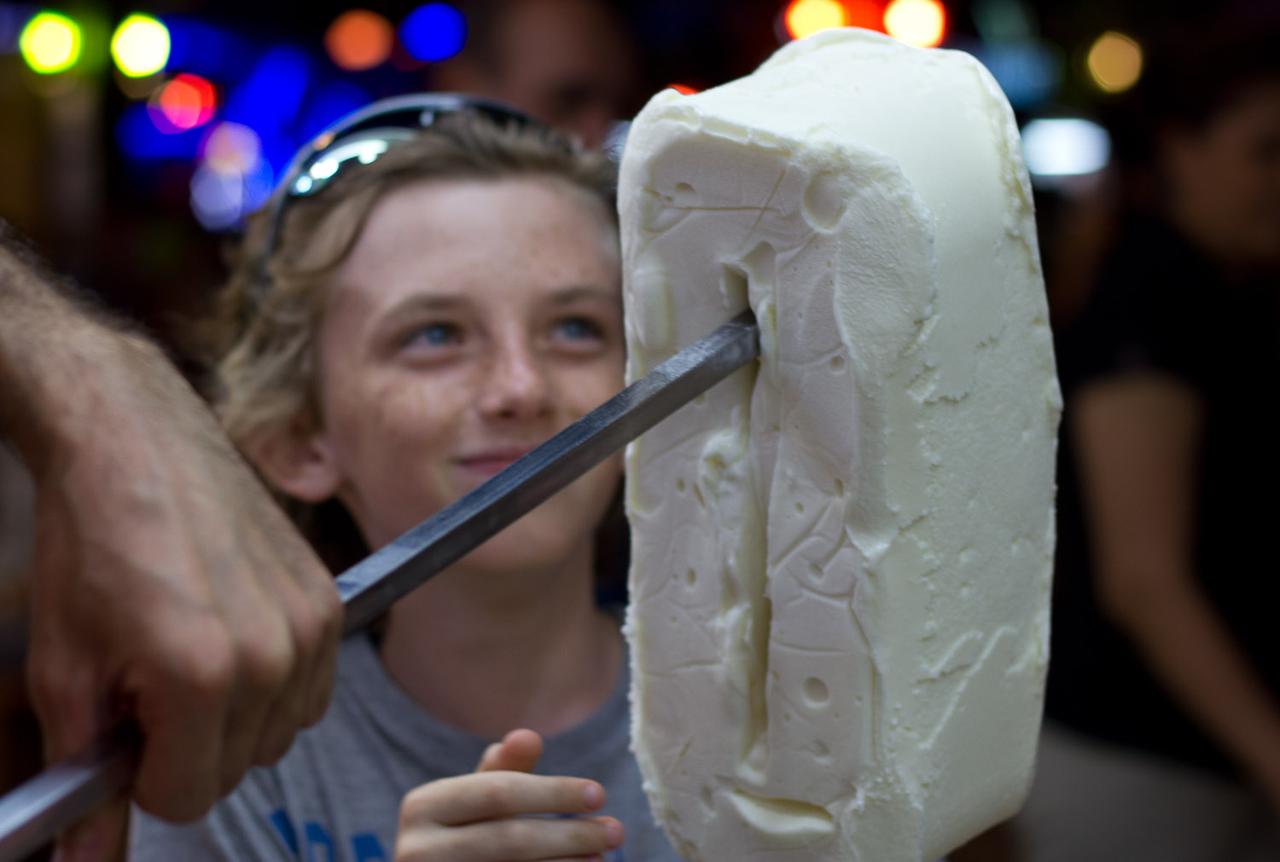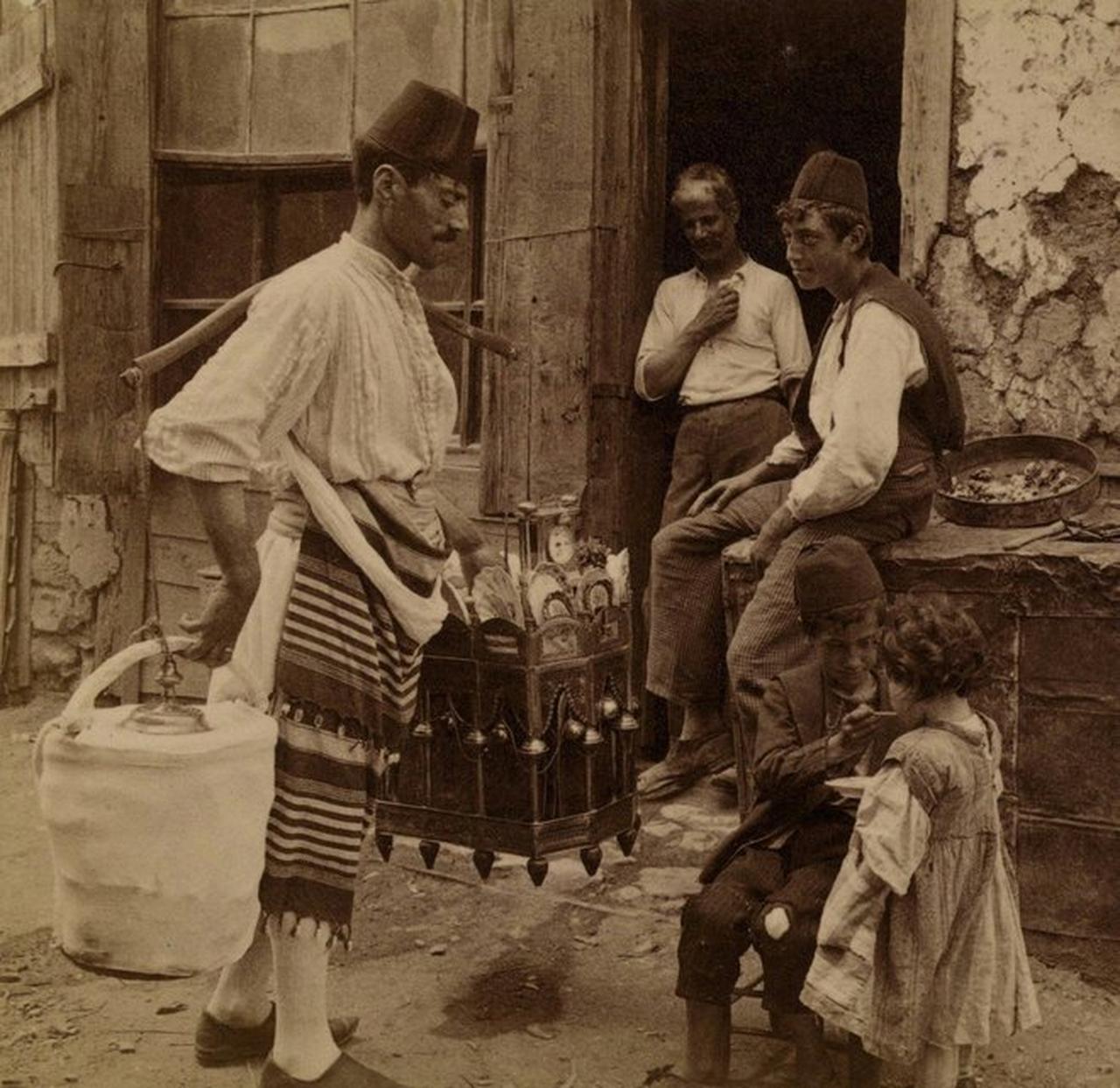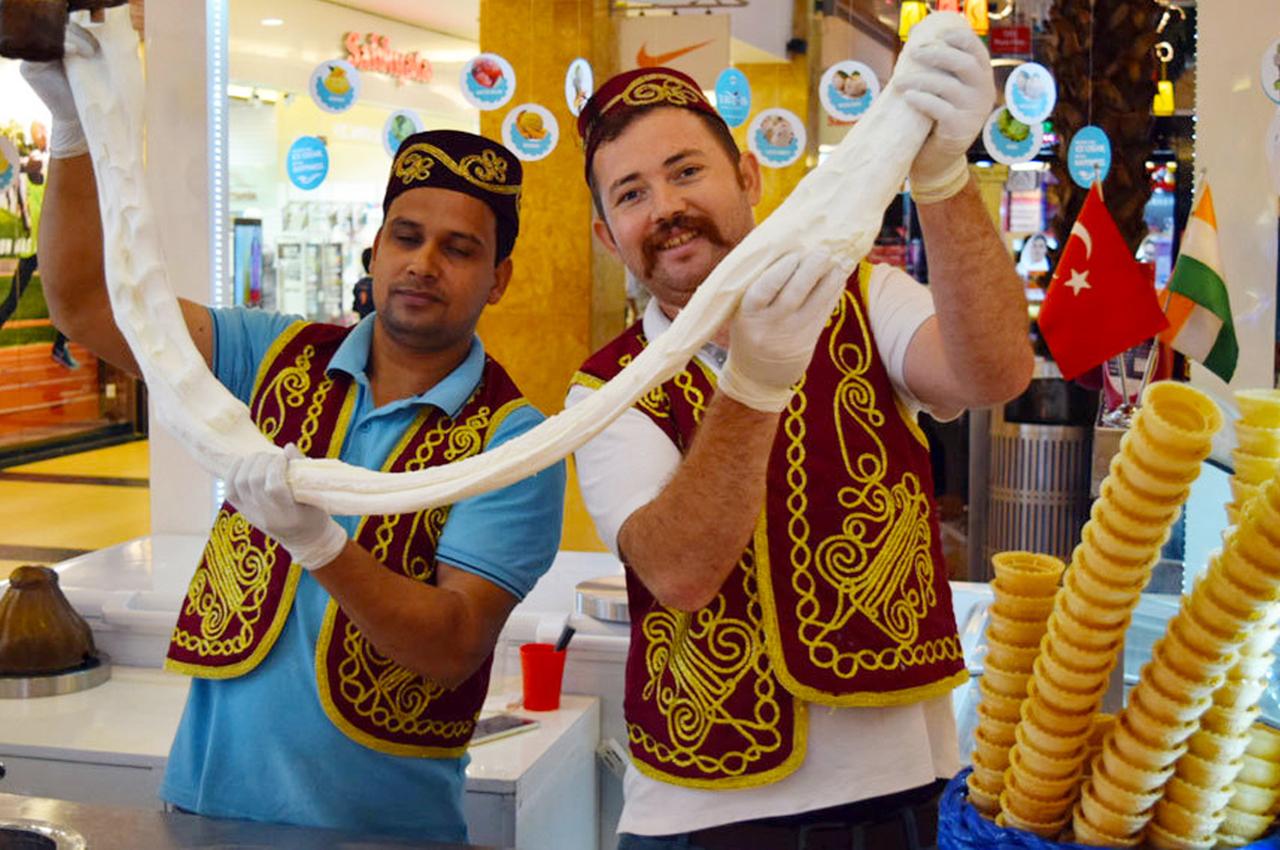
Traditional Turkish ice cream, known as dondurma, is famous for its unique chewy, thick, and elastic texture, which sets it apart from typical ice creams worldwide.
This distinctive texture comes from two special ingredients: salep, a flour made from the tubers of wild orchids native to Türkiye’s Kahramanmaras region, and mastic, a resin that gives the ice cream its chewiness.

The history of Turkish ice cream, particularly maras ice cream, dates back several centuries and is deeply rooted in the Ottoman Empire era.
Ice and snow-based cold desserts have ancient precedents, with frozen fruit juices enjoyed since at least the 13th century by the Seljuk Turks.
By the 17th century, ice cream became prevalent in Ottoman society, initially homemade in households and dervish lodges and then later becoming a popular commodity sold on the streets during summer.
Maras ice cream originated in the city of Kahramanmaras, located at the foot of Ahir Mountain, with its history going back around 300 years.
It developed from an earlier Anatolian dessert known as Karsambac, which combined fruit extracts with preserved snow. Eventually, it added milk, honey, molasses, and most importantly, salep (powdered orchid tubers) to give maras ice cream its distinctively thick and elastic texture.
A popular legend credits an Ottoman man named Osman Agha, who accidentally invented maras ice cream when he buried a mixture of sahlep and milk in the snow to preserve it and it transformed into ice cream.
With vendors customarily donning local costumes and pulling off amusing stunts while serving patrons, maras ice cream has come to represent Turkish cuisine and is both a dessert and a cultural experience.
The recipe and preparation techniques have been passed down through generations, preserving the traditional methods that give maras ice cream its distinctive qualities.

The texture of Turkish ice cream (dondurma), especially maras ice cream, differs significantly from Western ice cream due to its chewy, stretchy, and dense consistency.
Turkish ice cream is thicker, more elastic, and less likely to melt than Western ice creams, which are usually creamy, soft and melt quickly.
It can be pulled and stretched like dough or taffy, and eating it usually involves using a knife and fork instead of just licking from a cone. Because of its elasticity, it's a fun way to eat, and vendors occasionally pull tricks by stretching and flipping the ice cream before serving it.
Western ice cream usually relies on cream, sugar, and air whipped into a light, smooth texture that melts quickly on the tongue.
In contrast, Turkish dondurma’s slow melting and dense texture come from the salep and mastic, combined with goat’s milk, which also contributes to its richer flavor and firmness.
Turkish ice cream is more than just a frozen treat—it is a cherished cultural symbol representing centuries of tradition, craftsmanship, and playful hospitality.
Its unique texture, combined with the engaging serving style, continues to captivate locals and tourists alike, ensuring its place as one of Türkiye’s most treasured culinary delights.
Whether tasted in a bustling marketplace or a quiet cafe, dondurma remains a joyful experience for all who savor its magic.